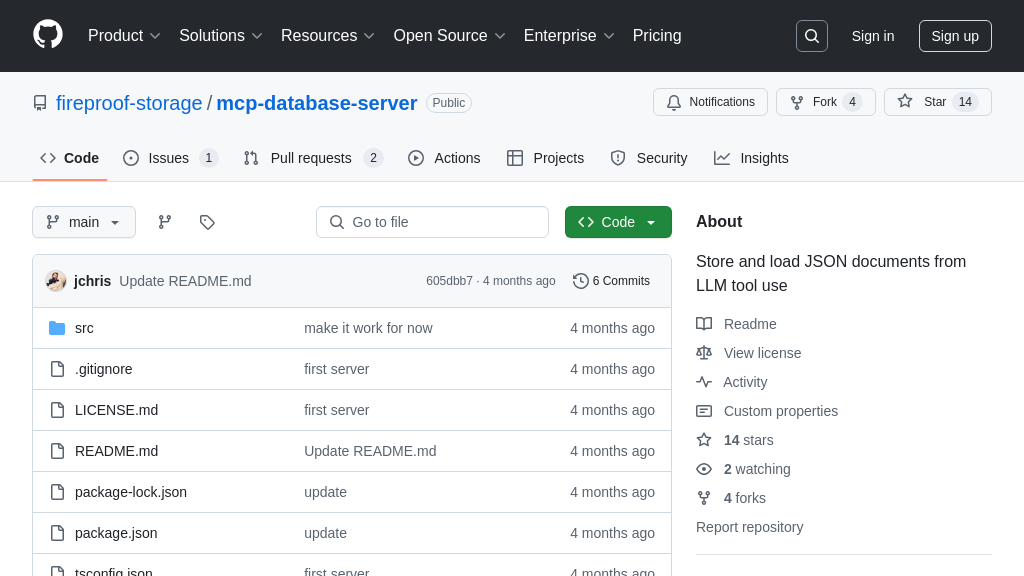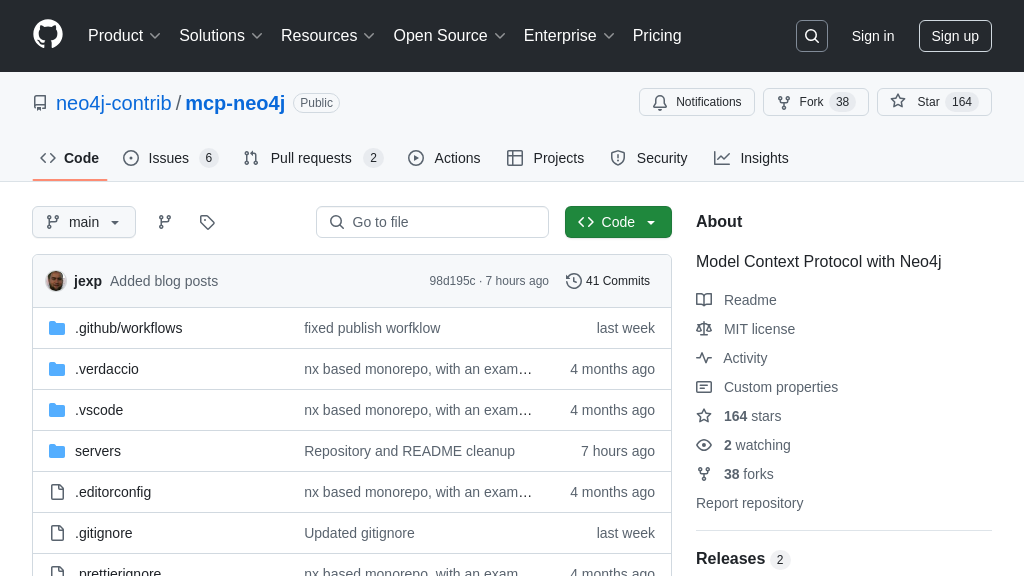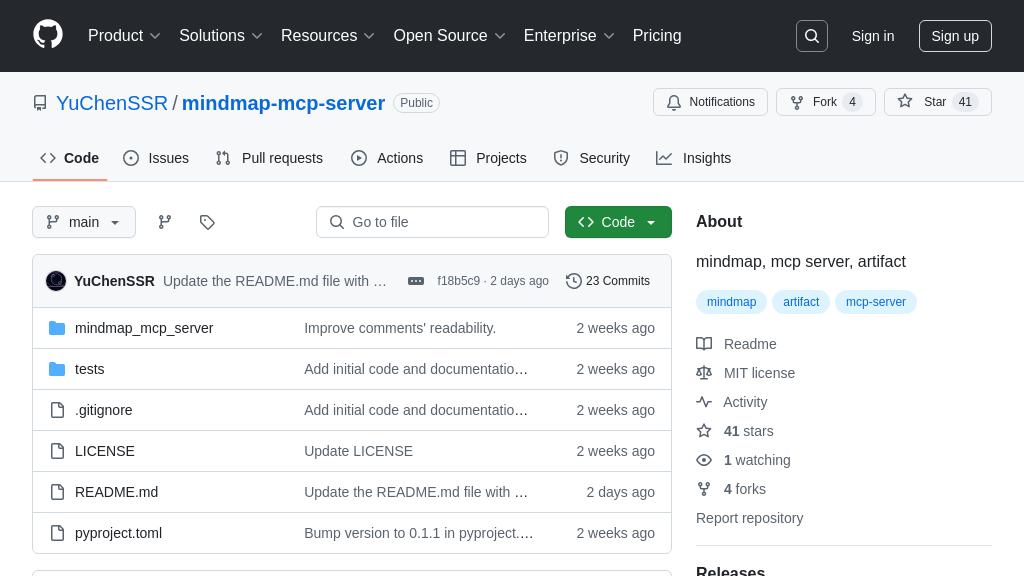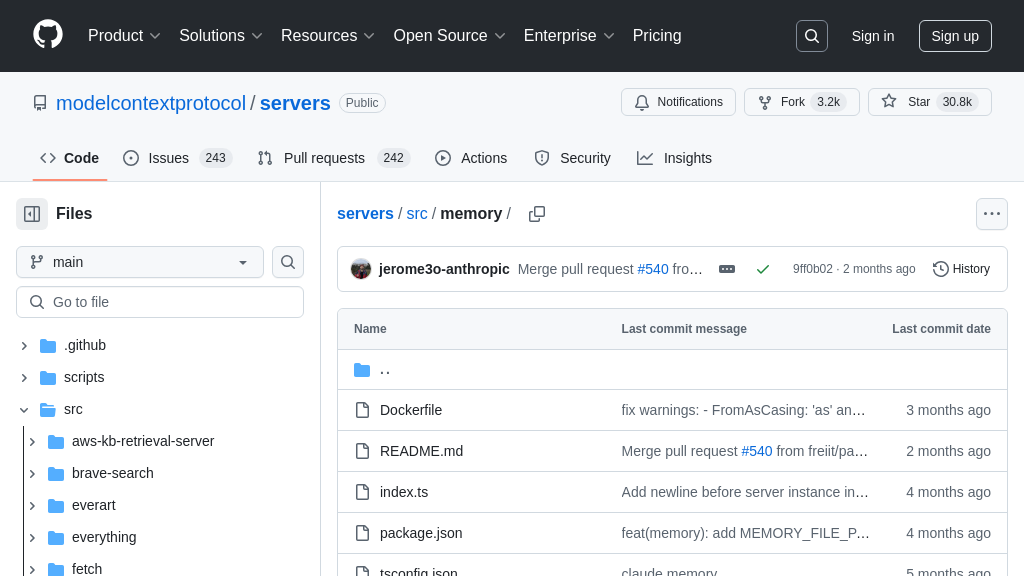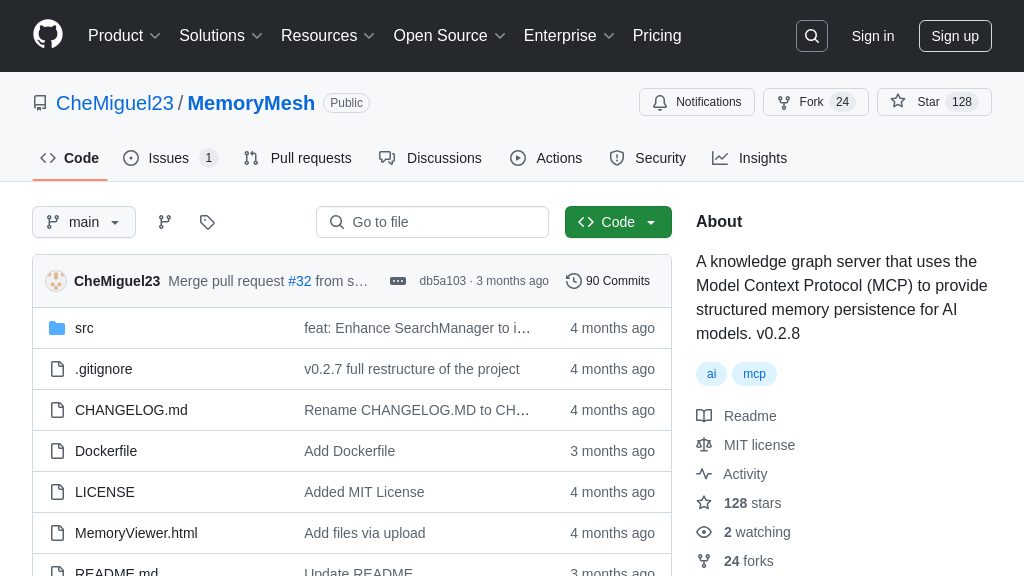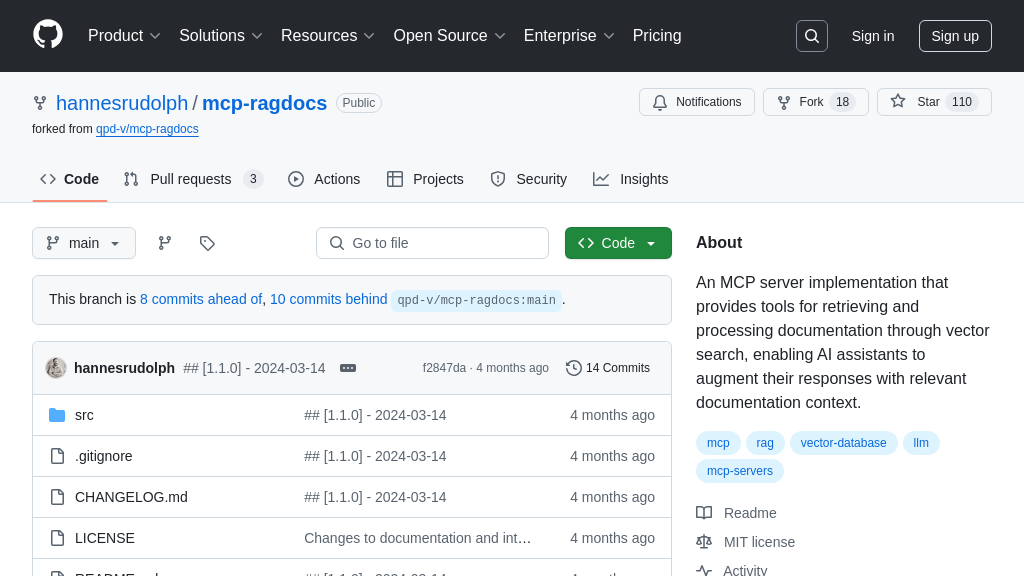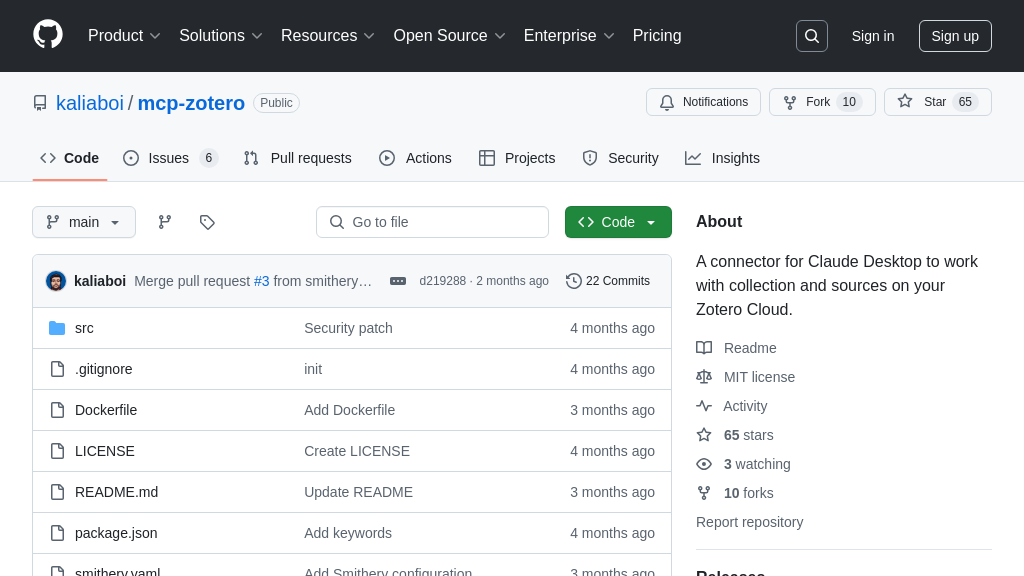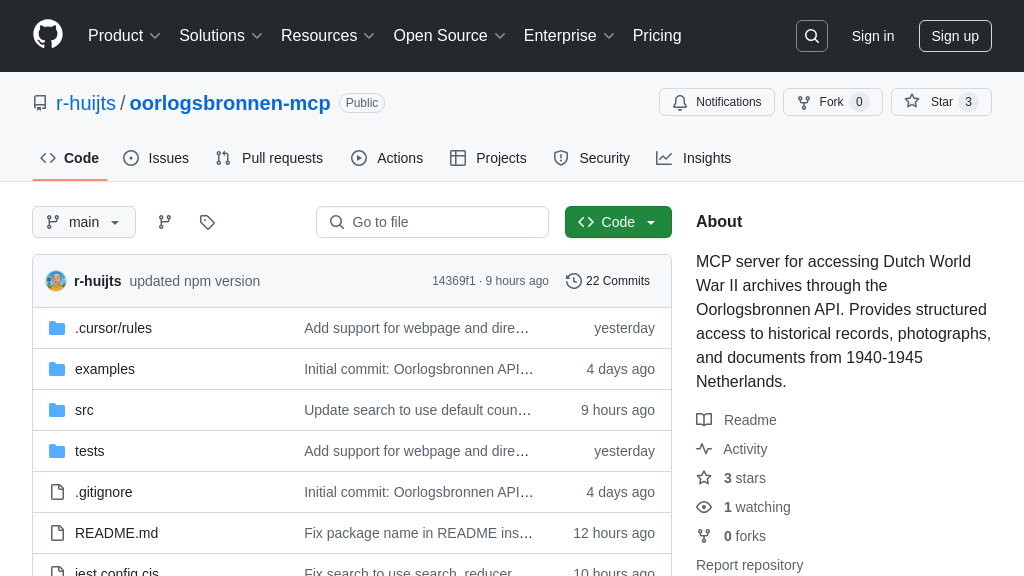my-bear-mcp-server
my-bear-mcp-server: Securely connects AI to your Bear notes via MCP for enhanced context and informed responses.
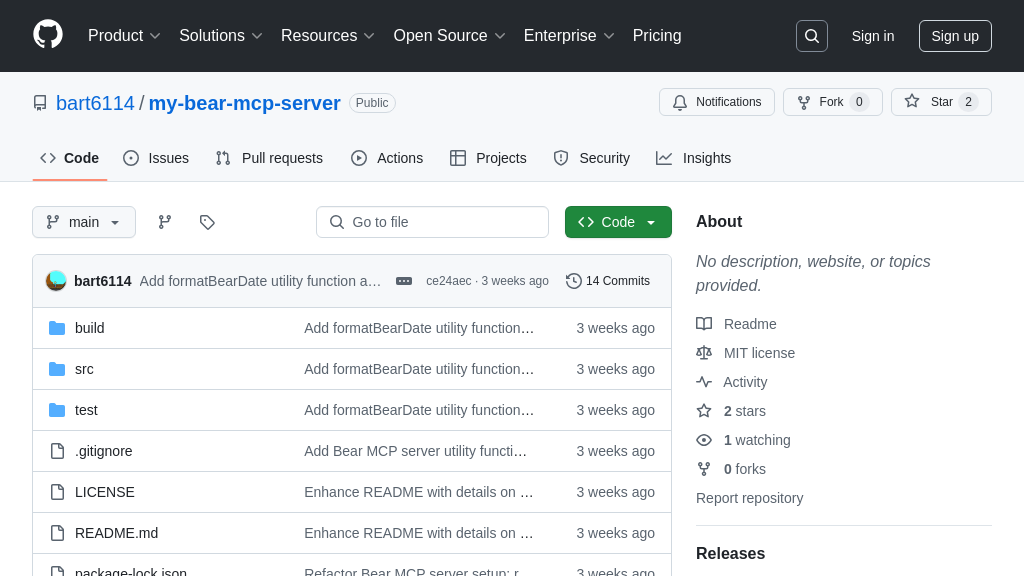
my-bear-mcp-server Solution Overview
my-bear-mcp-server is an MCP server designed to connect AI assistants with the Bear note-taking application. It allows AI models like Claude to access and utilize notes stored within Bear, providing valuable context for more informed and relevant responses. This server acts as a secure bridge, offering read-only access to the Bear SQLite database, ensuring the safety and integrity of user notes.
Key features include tools for searching notes by term or tag, opening notes by title or ID, and retrieving tags. By leveraging my-bear-mcp-server, developers can enable AI assistants to seamlessly integrate a user's personal knowledge base from Bear, enhancing their ability to provide personalized and context-aware assistance. The server is implemented using JavaScript and TypeScript, and can be easily integrated with Claude via a simple configuration update. This empowers AI models to provide more accurate and insightful responses based on the user's own notes and information.
my-bear-mcp-server Key Capabilities
Read-Only Bear Notes Access
The my-bear-mcp-server provides AI models with secure, read-only access to notes stored within the Bear note-taking application. This is achieved by establishing a direct connection to the Bear SQLite database, strictly enforcing read-only mode at the database driver level. This ensures that the AI model can access and utilize the information contained within the notes without any risk of accidental or malicious modification. The server acts as a secure bridge, allowing AI to leverage user's personal knowledge base in Bear.
For example, an AI assistant can use this feature to answer questions based on the user's notes, summarize meeting notes, or provide context-aware suggestions based on previously recorded information. This enhances the AI's ability to provide relevant and informed responses, making it a more valuable and personalized tool. The technical implementation uses the Database class from a SQLite driver with the readonly flag set to true, preventing any write operations.
AI-Powered Note Retrieval
This server exposes a suite of tools designed for efficient note retrieval within the Bear application. These tools include open_note (to open a note by title or ID), search_notes (to search for notes by term or tag), get_tags (to retrieve all tags), and open_tag (to display notes with a specific tag). These tools empower AI models to quickly locate and access relevant information within the user's Bear notes, enabling more sophisticated and context-aware interactions.
Imagine an AI assistant tasked with planning a trip. Using the search_notes tool, it can quickly find all notes related to "travel" or a specific destination. It can then use the open_note tool to access detailed information about hotels, restaurants, and activities, providing the user with a comprehensive and personalized travel itinerary. The server uses SQL queries to interact with the Bear database, efficiently retrieving the requested information based on the provided parameters.
Seamless Claude Integration
The my-bear-mcp-server is designed for seamless integration with AI assistants like Claude, requiring minimal configuration. The provided configuration snippets for both the Claude Desktop App and the Claude VS Code Extension demonstrate the ease with which the server can be incorporated into existing workflows. This allows users to quickly leverage their Bear notes within their preferred AI environment, enhancing productivity and unlocking new possibilities for AI-powered note management.
For instance, a user can configure the server to work with their Claude instance and then ask questions like "What were the main points discussed in my last meeting about Project X?". Claude can then use the my-bear-mcp-server to access the user's Bear notes, find the relevant meeting notes, and provide a concise summary. The integration is facilitated by defining the server's command and arguments within the Claude configuration files, allowing Claude to execute the server and communicate with it using the MCP protocol.
